Last Updated on January 24, 2024 by Greg Gillson
How do you feed wild birds without making a mess?
Many people give up on feeding birds.
You can see those abandoned bird feeders in people’s yards. One major reason people stop feeding birds? “It’s just too messy!”
So, how do you feed birds without making a mess?
You can feed birds without making such a mess by making 3 changes. Change the amount of food you offer to only what the birds eat in a day. Change the type of food you offer to hulled sunflower and other hulled seeds. Change the type of bird feeder to a tube feeder.
Messy bird feeders are discouraging. Fallen seeds and hulls can kill the grass. They can draw insect pests. Messy bird feeders can even draw rats. Worse yet, if not cared for properly, bird feeders can actually spread diseases to birds we’re trying to help and enjoy.
I’ve lived in homes with ample backyards where bird feeding was simple. Any seed spillage just went to the ground at the rough back edge of the property. However, I’ve also lived in second-floor apartments and other places where feeding birds was not practical because of the mess.
Winter weather can blow bird seed hulls all over the yard, tip over feeders, and make a gooey mess of moldy seeds unless you clean up immediately. Let’s face it, going out regularly in winter weather to clean the bird feeders is not high on most people’s list of fun things to do.
If you’ve stopped feeding birds because of the mess, perhaps you can use these tips to start feeding birds again–this time without the mess!
Make bird feeding less messy by putting out less food
Do your birds have a never-ending supply of bird seed? If so, the birds have no need to search for any seeds spilled on the ground under the feeder.
By putting out less food than your birds can eat in a day, you encourage birds to feed on the ground searching for spilled seed after the feeder is empty.
Make sure to refill your feeder every day, though, or birds will not return regularly. If there’s no extra food in your feeder it is less likely to go bad or attract non-bird pests.
[You may like this related article: Bird feeder empty in a day–How often should you refill?
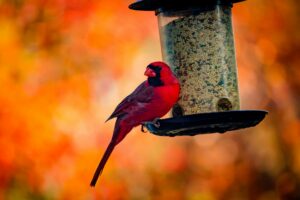
Make bird feeding less messy by changing to hulled sunflower and other seeds
The most popular bird seed blends that people buy are the least expensive. But these are filled with up to half seeds that birds don’t like. They throw it out and it creates a mess. Don’t buy bird seed that contains red milo. It is actually less expensive to pay twice as much for bird seed that has no milo.
Most of the seed that birds do eat is the inedible hull. Hulls are entirely waste. Hulls are heavy. By weight, sunflower seeds are 35-40% hulls, waste, mess. Hulled sunflower seeds probably cost more than double that of seeds that have the hulls on. But there’s no mess with hulled seeds.
Also consider offering non-seed alternatives. Fruits and nuts (shelled) are a good supplement to hulled sunflower seeds. Suet is a good choice in cool weather.
[I wrote an article on different kinds of sunflower seeds, including hulled sunflowers.]
Make bird feeding less messy by switching to a tube feeder
Some sparrows habitually kick and scratch the ground while they eat. If they’re on a tray feeder, seeds will fly.
Large numbers of birds on the feeder create chaos, and bird seeds may fly!
Tube feeders make bird feeding less messy. Only a few seeds at a time are available to one bird per feeding port. This makes spillage less of a problem.
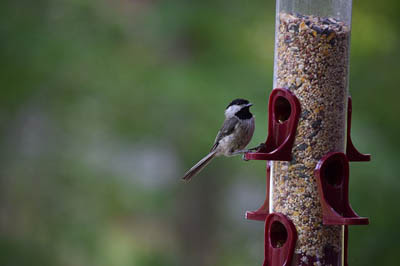 |
| Chickadee at tube feeder |
Tube feeders are also more resistant to rain soaked seeds, reducing the chance for moldy seeds. Ground feeding birds will still feed on any spilled seeds under the tube feeder. A bonus to tube feeders is that large birds have trouble coming in and eating all the food at once.
Not all birds eat from tube feeders. Tube feeders attract finches, goldfinches, chickadees, siskins, and nuthatches.
However, if any seeds do spill out, sparrows, juncos, towhees, and doves may search under the feeder and keep the ground clean.
Feed different foods in different feeders. That way birds will go to the feeder that has the food they want and they won’t be picking through and throwing away the seeds they don’t want.
Go out there. Give bird feeding another try. This time make it non-messy!
Wrapping Up
It is really important to keep your backyard clean of waste feed.
Messy bird seed on the ground can pose several problems, depending on the environment and the type of seed used:
For Birds:
- Disease transmission: Spilled seed can attract rodents and other animals that can carry diseases harmful to birds, such as salmonella and West Nile virus. Contaminated seed can then infect birds feeding on the ground.
- Competition: Large spills can attract aggressive bird species or flocks that may dominate feeders and exclude smaller, native birds.
- Nutritional imbalance: If birds primarily eat spilled seed, they might miss out on important nutrients and insects found in their natural diet, potentially impacting their health and breeding success.
For the Environment:
- Weed growth: Uneaten seeds, especially those with hulls intact, can germinate and lead to unwanted weed growth, disrupting native plant communities.
- Water pollution: Decomposing seed and droppings can contribute to nutrient over-enrichment in waterways, leading to algae blooms and harming aquatic life.
- Attracting unwanted animals: Spilled seed can attract squirrels, raccoons, and other animals that may damage bird feeders, gardens, and property.
For Humans:
- Appearance: Large amounts of spilled seed can be unsightly and detract from the aesthetics of your yard or garden.
- Attracting pests: Seed spills can attract insects and rodents, causing nuisance and potentially transmitting diseases to humans.
- Mold and mildew: Decomposing seed can create damp conditions that promote the growth of mold and mildew, which can be harmful to human health.
Frequently Asked Questions
Can I throw bird seed on the ground?
Whether you can throw bird seed on the ground depends on several factors and potential downsides:
Benefits:
- Ground-feeding birds: It can attract species like sparrows, juncos, towhees, and quail that primarily feed on the ground. These birds might not readily visit hanging feeders.
- Supplemental food source: During harsh weather or times of food scarcity, scattered seed can provide crucial nutrition for birds.
- Natural feeding behavior: Mimics how birds naturally forage for food on the ground.
Downsides:
- Mess and waste: Uneaten seed can attract undesirable animals like rodents and squirrels, and can also lead to weed growth with persistent hulls.
- Disease transmission: Spilled seed can become contaminated with droppings, increasing the risk of disease transmission among birds.
- Competition: Aggressive bird species may dominate the scattered seed, excluding smaller or less assertive birds.
- Nutrient imbalance: If birds rely solely on the scattered seed, they might miss out on important nutrients and insects found in their natural diet.
- Attracting pests: Spills can attract insects and rodents, potentially causing nuisance and even transmitting diseases to humans.

Is bird seed bad for the environment?
While it’s not recommended to use old bird seed that has been exposed to the elements or contaminated by droppings, there are still several ways to put expired or unused bird seed to good use:
For the Garden:
- Composting: Bird seed hulls and other organic components can be added to your compost pile to create nutrient-rich soil amendment. However, ensure the seed hasn’t gone moldy or attracted pests.
- Mulching: Sprinkle a thin layer of bird seed around the base of plants to suppress weeds and retain moisture in the soil. Choose seeds without hulls for this purpose.
- Seed bombs: Mix expired bird seed with clay and soil to create seed bombs that you can toss into barren areas or disturbed patches to encourage wildflower growth.
For Wildlife:
- Scatter on the ground: If the seed is still edible and hasn’t become spoiled, you can scatter it in areas frequented by ground-feeding birds like sparrows, juncos, or quail. Remember to choose an appropriate location away from bird feeders to avoid attracting pests.
- Create a winter feeding station: Sprinkle some seed on a platform feeder or create a ground feeding area in a sheltered location to provide food for birds during harsh weather periods.
- Wildlife rescue centers: Contact local wildlife rescue centers to see if they can use the bird seed for rehabilitating animals.
Related Articles:
Comparing different types of no mess and waste free bird seed.



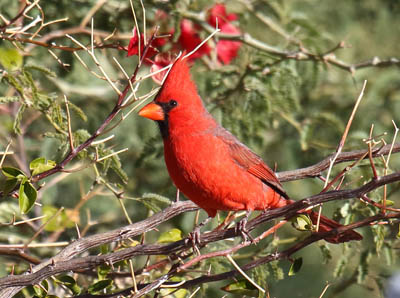
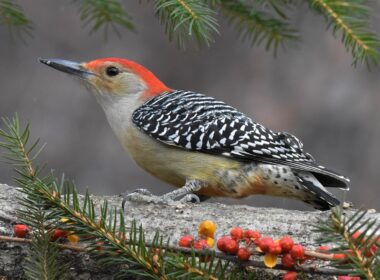
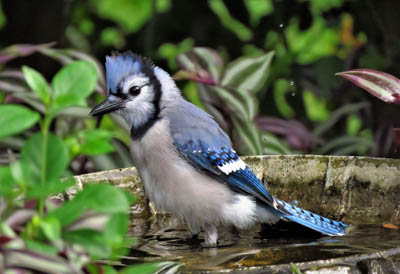
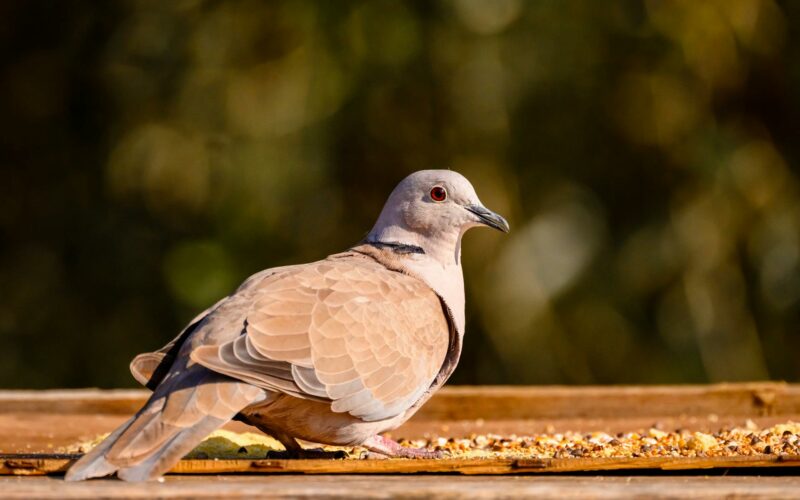

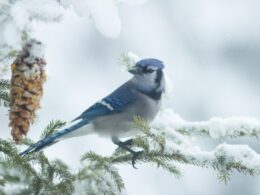
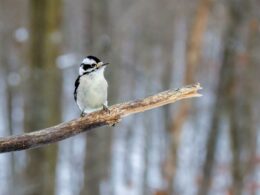
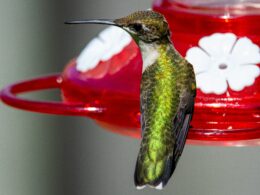
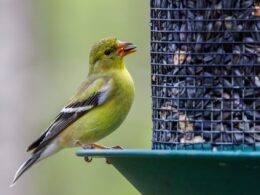
How do you keep squirrels away?
I have a dog that loves to kill squirrels and I have a fenced backyard so that makes a difference
I have fed birds with left over hardened biscuits and corn tortillas which I cut/break onto tiny pieces which I spread onto the ground. They love them and quickly leave the ground spotless.
Keeping squirrels away can be tough.
The usual suggestions are to place the feeder on a pole at least 5 feet high so they can't jump up. Put a baffle on the pole so they can't climb up. Keep the feeder at least 10 feet away from any tree or building they can climb up and jump sideways to.
Then there are caged tube feeders that keep large squirrels out. And feeders with weight-sensitive perches that close the feeder port when they get on. People have varying success with these, depending upon how determined the squirrel is to get in!
That will work for larger starlings and jays and sparrows. But probably will not attract chickadees and finches, which usually don't usually eat bread.
What species are you attracting?
I was just seeking advice on how to keep my bird feeder from having most of the seed dumped on the ground
I hope this and the related article helped you, Julie.
https://whatbirdsareinmybackyard.com/2021/04/why-do-birds-throw-seeds-out-of-feeder.html